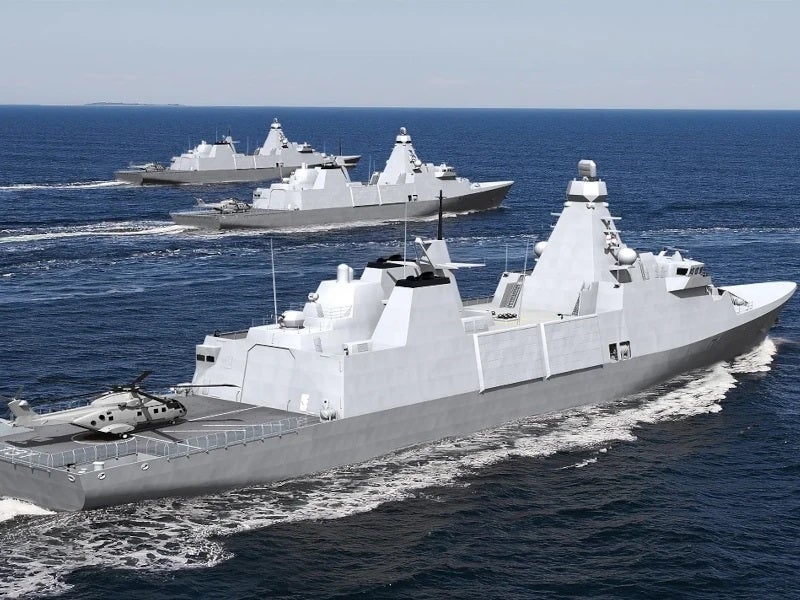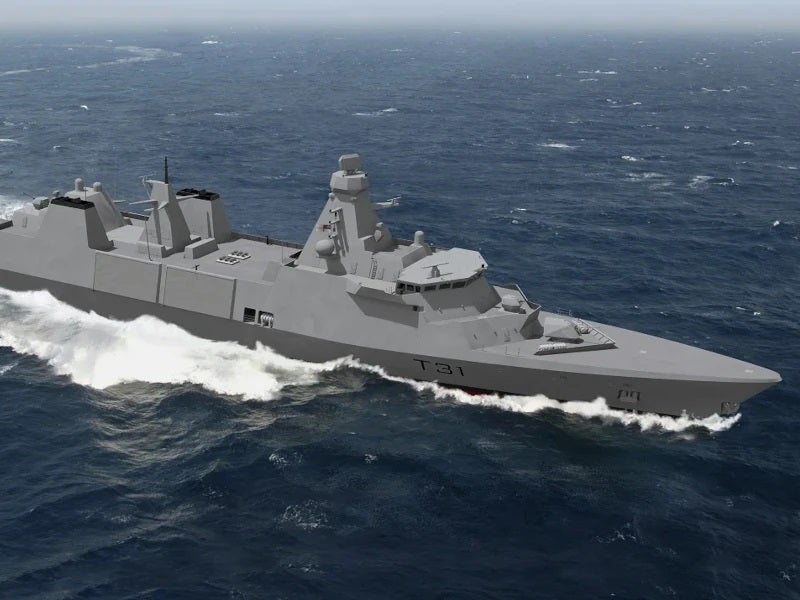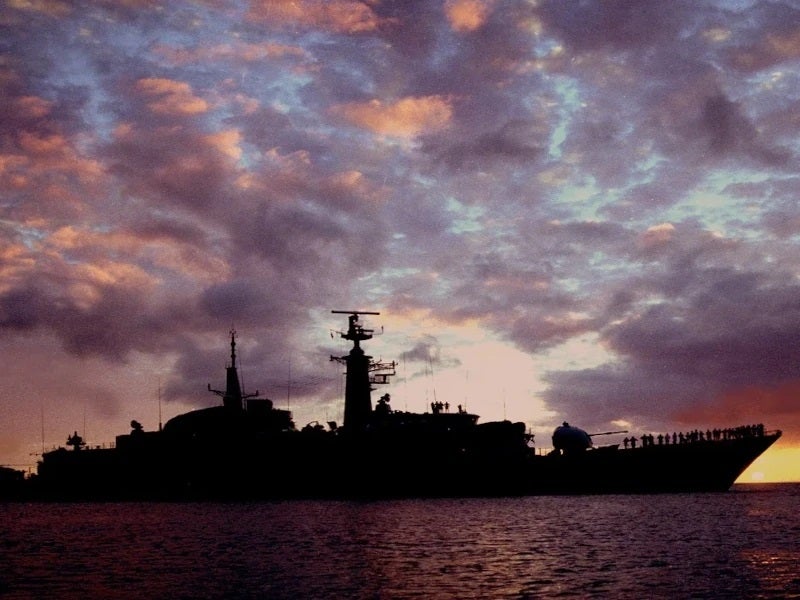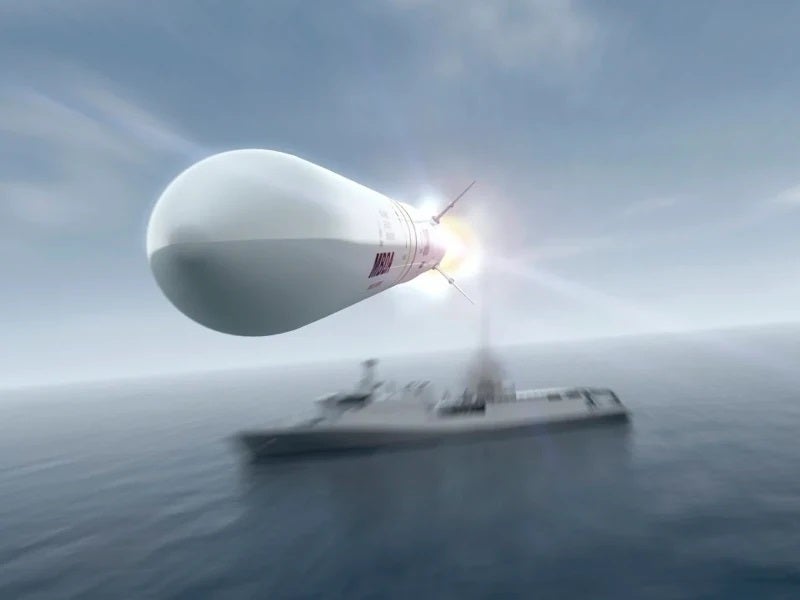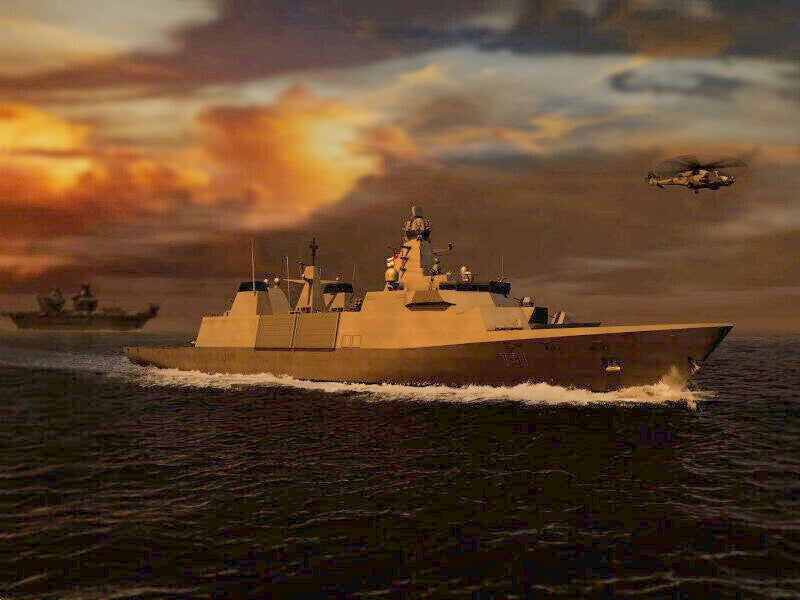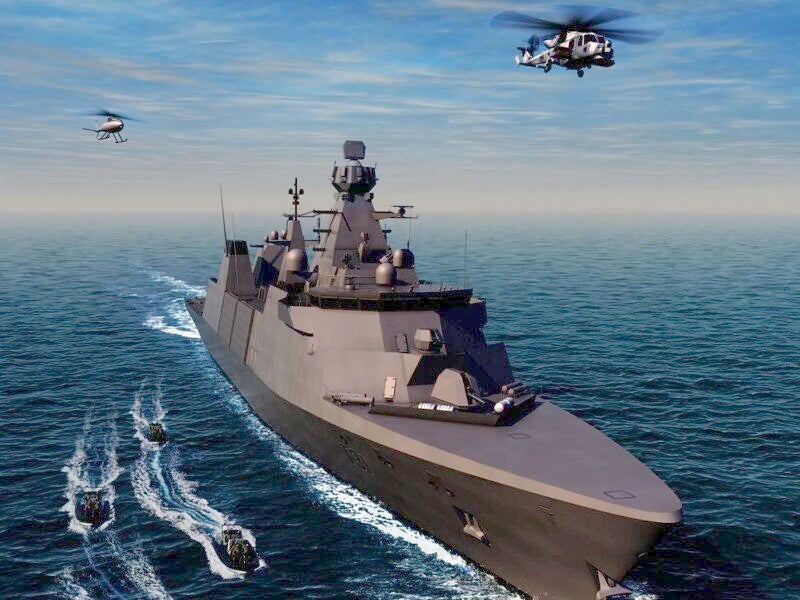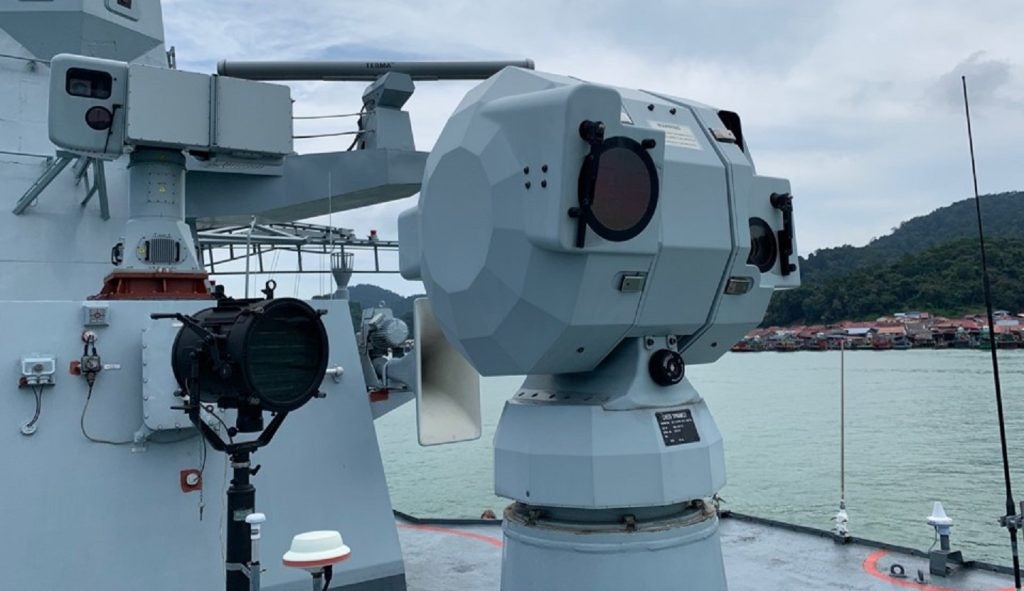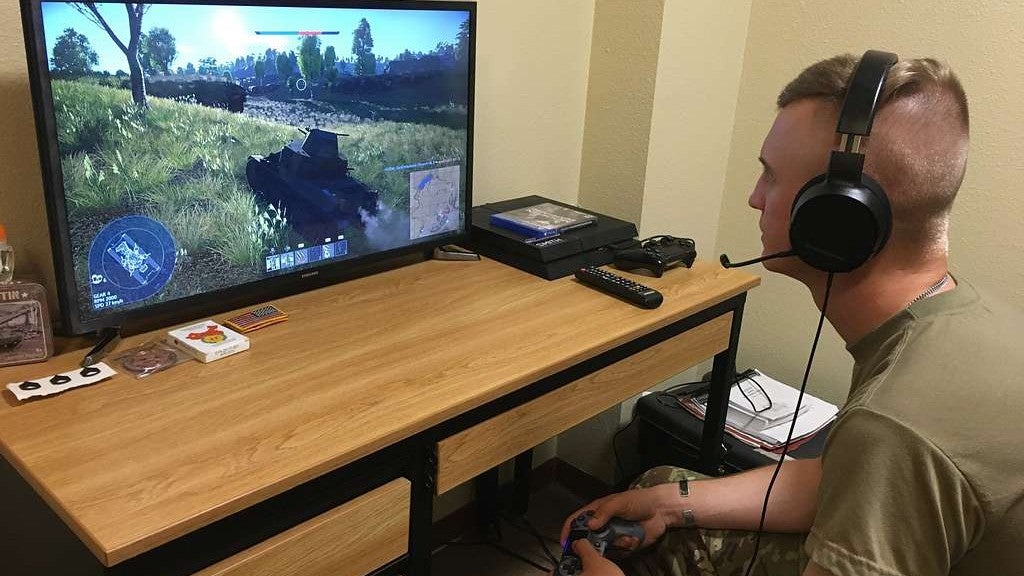Babcock International, a British aerospace, defence, and nuclear engineering services company, is constructing the Inspiration-class Type 31 frigates for the UK Royal Navy at its dockyard in Rosyth, Scotland.
The UK government is procuring five next-generation Inspiration-class frigates to replace the Royal Navy’s Type 23 general-purpose frigates, which have been in service since the early 1990s. The Type 31 frigates will be sent on long-term deployments to different parts of the world to protect the interests of the UK.
The Type 31 frigate is the UK variant of the Arrowhead 140 baseline design developed by Babcock and its partners.
Type 31 is part of the government’s 2030 vision to prepare the three branches of its defence to face all kinds of threats. It is being developed under the UK’s new National Shipbuilding Strategy, which aims to transform the country’s naval shipbuilding capabilities.
The steel-cutting ceremony for the second frigate, HMS Active, was held in January 2023 while the ship’s keel was laid in September 2023.
The new warships are expected to enter service by 2028 and will work alongside the Type 32 and Type 26 frigates, which will be dedicated to submarine detection missions.
Type 31 frigate development details
The competitive design phase in 2018 included bids from teams led by BAE Systems, Babcock, and Atlas Elektronik UK.
The Arrowhead 140 design proposed by Babcock and its partners BMT and Thales was selected for the £2bn ($2.57bn) Type 31 frigate programme in September 2019.
The Babcock-led consortium was formally awarded the contract to build five new Type 31 frigates for the UK Royal Navy in November 2019.
The whole ship critical design review for the Type 31 frigate was completed in April 2021. The names of the five next-generation Type 31 frigates for the Royal Navy, HMS Active, Bulldog, Campbeltown, Formidable and Venturer, were revealed in May 2021.
The first steel for the lead Inspiration-class warship, HMS Venturer, was cut in 2021 while its keel was laid in 2022.
Inspiration-class warship design and features
Each Type 31 ship will have a length of approximately 140m, displacement of more than 5,700 tonnes, and the capacity to accommodate 105 crew members.
The new warship features a unique modular design that supports different configurations to meet the demands of the Royal Navy, as well as allied navies across the world. The baseline design offers a global and modern naval warship to the Royal Navy.
The frigate can be fitted with an open architecture combat system, bridge wing modules, and flexible mission bays.
It will feature electrically actuated assemblies instead of hydraulic systems. High-pressure hydraulic systems have the potential to increase the weight, complexity, and cost of the naval platform, as well as pose a risk in case of pipeline rupture during an armed conflict.
The fast, agile, and versatile warships will allow the Royal Navy to execute power projection around the world. Furthermore, the design includes a flight deck for a Wildcat maritime attack helicopter and hangar space for a Merlin military utility medium-lift helicopter.
Onboard sensors and combat management systems of the Type 31 frigate
The next-generation frigate will be equipped with Thales’ NS110 3D or an NS200 active electronically scanned array sensor as the primary radar.
The space margins in the frigate design will allow for potential upgrades to sensor and weapon systems in the future. The latest version of Thales’ TACTICOS combat management system, which has a fully open architecture, will be integrated into the Type 31 frigates.
The company’s in-service support package for the combat management system will maximise the combat system capabilities for customers. Other onboard sensors and processing systems for the ship will include a SharpEye navigation radar, Mirador Mk2 electro-optical systems, and the Vigile-D digital electronic support measures.
An ultra-high frequency (UHF) satellite communications (SATCOM) system incorporated into the frigate will enable reliable voice and data communications at sea. It will provide secure beyond-line-of-sight communications for the Inspiration-class ships.
The frigate will be equipped with the Synapsis Naval warship integrated navigation and bridge system (WINBS), which consists of modernised solutions for integrated navigation.
Integrated with an AI-based platform, the system includes naval radars, automatic, and manual steering control systems, communication systems, as well as a full suite of navigational and tactical sensors.
The factory acceptance test of the first Type 31 Inspiration Class vessel’s Synapsis WINBS was completed in January 2024.
Naval gun systems
Each Type 31 frigate will be outfitted with sophisticated multipurpose gun systems such as a Bofors 57 Mk3 medium-calibre gun and two Bofors 40 Mk4 small-calibre guns.
Both close-in weapon systems can offer protection to the warships against current and future complex threats.
The guns will provide optimum ammunition options, including the cost-effective six-mode programmable Bofors prefragmented, programmable, and proximity-fused (3P) all-target munition.
The Bofors 40 Mk4 is the newest version of the 40mm family of naval gun systems.
Air defence system of Type 31 next-generation frigates
The Sea Ceptor advanced naval air defence system will be integrated into the frigate for protection against existing and emerging threats such as attack aircraft, high-speed manoeuvring missiles, and fast inshore attack craft.
The defence system will protect the Type 31 frigate, as well as vessels operating in tandem with it. The Sea Ceptor all-weather weapon system will provide close-in air defence, as well as local-area air defence using the Common Anti-Air Modular Missile.
The system will offer a high rate of fire with the capability to attack multiple targets simultaneously and a vertical launch feature, which enables 360-degree coverage in all launch sectors.
Engine and propulsion system
Each frigate will draw power from four MTU 20V 8000 M71 engines, with each engine producing more than 8,000kW. Four MTU 16V 2000 M41B generator sets will be used for the onboard power needs of each vessel, with each generator delivering more than 900kW of power.
The naval ships will also be equipped with Rolls-Royce’s MTU Callosum propulsion control and monitoring system.
The frigate will be propelled by MAN Alpha VBS Mk 5 CP propeller systems, two asymmetric shaft lines, and a combined diesel and diesel propulsion system. It will achieve a top speed of 26 knots and a maximum range of 7,500nm.
Contractors involved
Technical products and services provider Eriks was awarded a contract to provide electrically actuated valves and associated equipment for the new Type 31 frigate programme. It will also provide inspection, testing, and certification of all components and assemblies.
BAE Systems was awarded the contract to provide five Bofors 57 Mk3 and ten Bofors 40 Mk4 naval guns for the Inspiration-class warships in October 2020. The contractual scope also includes services, tools, spares, documentation, and support. The naval gun systems are expected to be delivered in 2024.
European missile manufacturer MBDA received a contract from the UK Ministry of Defence to provide the Sea Ceptor weapon system for the new general-purpose frigates in May 2021. The scope of work under the contract includes the integration of Sea Ceptor, as well as the supply and installation of ship hardware for the Type 31 frigates.
In May 2021, Babcock awarded a major contract to Norwegian marine and naval visual surveillance systems provider Imenco to supply CCTV systems for the Type 31 programme.
Thales serves as the programme’s mission systems integrator. It is responsible for the supply of the combat system, communications systems, and navigation and bridge system.
In May 2023, Thales was awarded a $88m contract to supply an additional combat management system, which will be installed at the Royal Navy’s Type 31 mission system shore integration facility at Portsdown Technology Park in Portsmouth.
MAN Energy Solutions was awarded the contract to deliver propeller equipment in April 2020. Anschutz (formerly Raytheon) was selected to supply the WINBS for the programme, and Viasat UK was contracted to provide the UHF SATCOM solution.
KAEFER UK, Kongsberg Maritime, Lloyd’s Register, and Novenco are some of the other contractors involved in the project.

